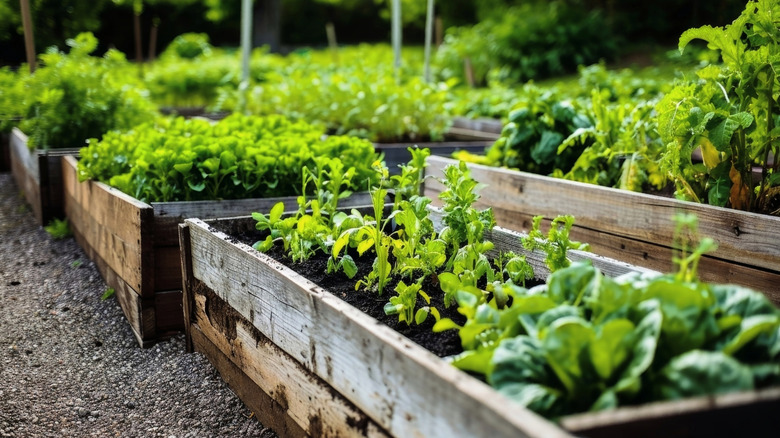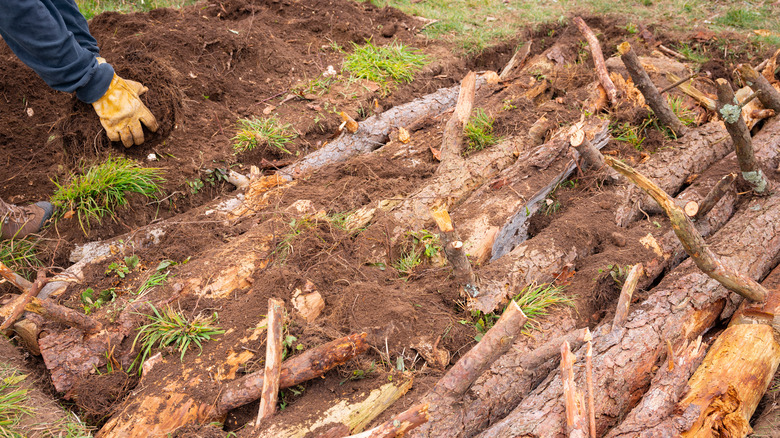Repurpose An Old Tree Stump For Nutrient-Rich Soil In Your Raised Garden Bed
When it comes to making weed-pulling and vegetable harvesting easier, many gardeners find raised beds to be better than in-ground ones. There won't be many vegetables, however, if your raised bed's soil isn't up to snuff. Compost can improve your soil's structure and nutrient content, but bin-based compost needs to be mixed into the garden. A German gardening technique called hügelkultur can help you create high-quality soil right where you need it. As with composting, decomposition is involved, but you don't have to collect banana peels or coffee grounds. Instead, this process relies on tree stumps and other plant matter from your yard — for example, branches and leaves. You can even use rotting lumber. In fact, rotting wood is ideal for this approach.
A hügelkultur garden bed begins with a huge pile of wood, soil, and other organic materials from your yard. As the wood breaks down, the pile contracts and becomes a sponge-like medium that supports plant growth. Decomposing wood infuses the garden with nutrients at a slow and steady pace. It also cultivates a community of helpful bacteria, fungi, earthworms, and more. Plus, as the logs and stumps crumble, air gets pushed into the pile, discouraging mold growth and other problems that result from poor circulation. Just as some types of wood are best for campfires, certain species of trees are ideal for hügelkultur. Some of the best trees for this method are alder, apple, cottonwood, maple, oak, poplar, and birch. Treated wood should be avoided because it can leach chemicals into the soil. Also steer clear of black walnut and other trees that produce toxic substances.
Making a hügelkultur garden with a tree stump
If you have a tree that's dead or showing signs of dying, use it to nourish a hügelkultur garden. First cut the stump and trunk into pieces. Then determine where you'd like your garden to go. You'll need a rectangular space that measures about 4 feet by 8 feet and gets plenty of sunlight. If anything's growing there, dig it up or run the lawnmower over it. Then add a layer of mulch to smother weeds.
In the fall, dig topsoil out of the rectangle you've set aside for your garden. You can make a series of holes, each of which is roughly a foot deep. These holes should be big enough to hold the tree pieces you've gathered. Place logs and stump chunks in them, followed by branches, leaves, and other plant material such as grass clippings. After pressing down the pile, add the topsoil you removed to create the holes. If you have long pieces of wood, arrange them lengthwise in the rectangle. Keep adding layers of hard wood and softer organic materials, filling in as many gaps as possible. When you've used all of your tree pieces, water the pile thoroughly, blanket it with 3 inches of topsoil, and add a layer of mulch for good measure. Then sit back and watch the magic happen.
When spring arrives, your hügelkultur garden will be ready to grow plants. Plant beans or other legumes the first year to replace nitrogen lost through the decomposition process. Also consider growing pumpkins, watermelons, and cucumbers, as vining plants tend to thrive in this style of garden.

